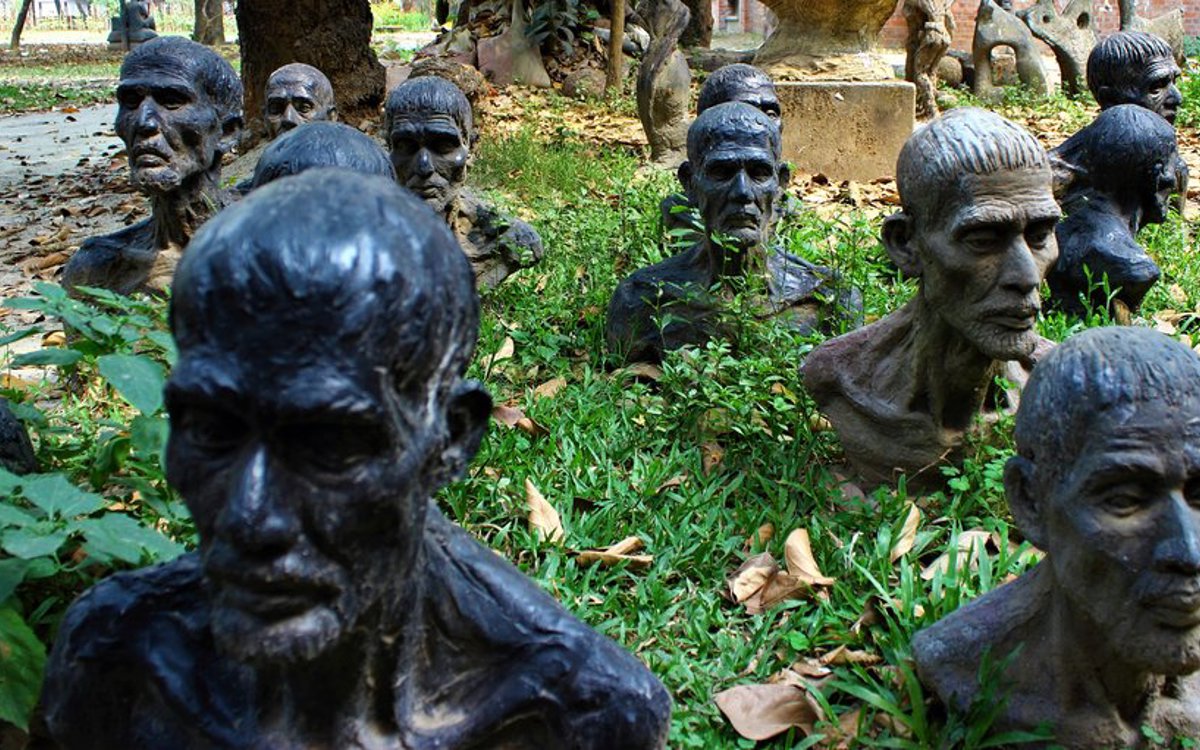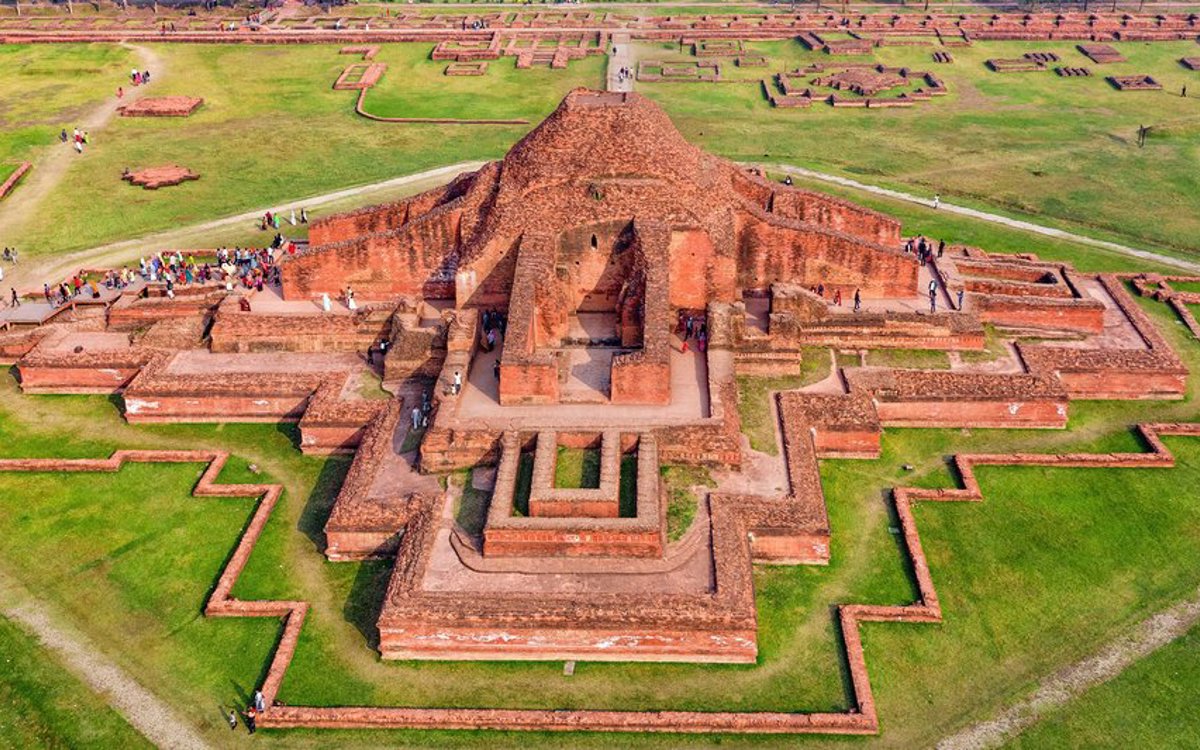Universities should be public spheres of lived experiences and imagination, not haunted by the spectres of dead thoughts. By Shamsad Mortuza, University of Liberal Arts Bangladesh

Universities should be public spheres of lived experiences and imagination, not haunted by the spectres of dead thoughts.
By Shamsad Mortuza, University of Liberal Arts Bangladesh
The deadline to write this article is about to be dead, and my skull is colonised by Zombie, a song by the Irish rock band, The Cranberries. My planned piece on decolonising education is going nowhere; well, to be precise, it is going everywhere, yet nowhere. As the lyrical ‘zombies’ scream through my headphones, adding to the cacophony of an already embattled mind, I ask myself: is it possible to completely shut myself off from the consciousness of others and unlearn something that we have accrued over centuries and relearn it, ignoring what has been ingrained in my brain already? How do I exorcise the walking dead memories of the past? What systemic violence will such a paradigm shift entail? What fault lines will it expose?
Drawing loosely on the ideas of Kenyan novelist Ngũgĩ wa Thiong’o, who wrote Decolonizing the Mind, or the French Martinique psychiatrist Frantz Fanon who wrote The Wretched of the Earth, the very notion of decolonising education rests on the creation of a national consciousness. For both critics, academia is still dominated by a group of educated upper class professionals, the ‘national bourgeoisie’, who carry the residual elements of a colonial past. From their position of power and privilege, this group finds it natural to dictate terms for the intellectual needs and knowledge base of a country, even after it has found political independence. As a professor of English literature and a member of the university’s top management, I probably fall into such a category whose role needs to be relegated, maybe annulled, before any change in the national education system is sought or made possible.
Ironically, I belong to an academic class that is both local and global. I am open minded enough to find affinity with an Irish band singing about the Troubles, a Kenyan author writing in his native Gikuyu, or a Martinique critic speaking out for the wretched of the earth. As a Bangladeshi academic, there is no way I can ignore the contributions of Bangla, my mother tongue, and its foundational role in the creation of Bangladesh (literally, ‘a country where Bangla is spoken’), as well as its shaping influence on my nationality. Yet given my western education and sensibility, many local scholars will think that my national consciousness is compromised, if not colonised, by the ideas of the Other. Deep down, I know that my head remains both a battleground and a meeting place for the global north and the global south, for the east and the west.

Man is man
Wasn’t it Rudyard Kipling who wrote ‘East is East, and West is West and never the twain shall meet’? The opening line of Kipling’s poem, The Ballad of East and West, is probably one of the most misunderstood lines of English literature. This, alongside the exoticisation of Asian locales, has brought charges of racism against Kipling. Most, however, tend to overlook the successive lines where Kipling adds: ‘But there is neither East nor West, Border, nor Breed, nor Birth / When two strong men stand face to face, though they come from the ends of the earth!’
The failure to see beyond the immediate fact and the selective or partial representation of truth is the greatest disservice that one can do to education. Kipling envisions a meeting of cultures where all engage with equal strength (even if one has to wait till Judgement Day for that). For us, the question then is: what should be the measure of such strength in a transcultural transaction and transnational knowledge exchange?
Kipling’s proposition was rejected by Rabindranath Tagore, who in 1913 became the first non-European to get a Nobel Prize for literature. Tagore argues that the west views the east as nothing more than a machine to run its empire, ignoring the human elements. In Creative Unity, Tagore rephrases Kipling to retort: ‘Man is man, machine is machine / And never the twain shall wed’. Tagore’s identification of the west in terms of a machine is conditioned by the first world war and the ongoing subjugation of the colonies at the turn of the 20th century. In an essay, East and West, he writes: ‘The wriggling tentacles of a cold-blooded utilitarianism, with which the West has grasped all the easily yielding succulent portions of the East, are causing pain and indignation throughout the Eastern countries. The West comes to us, not with the imagination and sympathy that create and unite, but with a shock of passion – passion for power and wealth. This passion is a mere force, which has in it the principle of separation, of conflict.’
Unfortunately, a century later, Tagore’s observation remains valid. The imperialism that has risen on the heels of colonialism presents us with new realities. In the last few decades, for instance, we have seen the passion to promote English as a skill grow to an indomitable force, with English language qualifications, such as IELTS, becoming a Commonwealth commodity. Language is fundamental to expressing our thoughts; to meaningful interactions and exchanges. While English remains a useful linguistic, cultural, and political bridge between Commonwealth countries, it is important that a local language does not feel marginalised in any meeting of the cultures.

A model we can call our own
The desire for decolonisation is a byproduct of an asymmetrical power arrangement in which one idea supplants the other or there is pressure to replicate one model with the other. The call for decolonisation is largely prompted by a feeling of being disenfranchised and disempowered for being different. In most cases, it is subsumed by pessimism and informed by democratisation. Unless we acknowledge such power dynamics, it will never be possible to decolonise education.
Then again, decolonising education should not be a wholesale rejection of all western models. While some radical ideological constructs sound fanciful in theory, their proof is in the pudding. During a visit to the killing fields of Cambodia, where the intelligentsia was annihilated simply for wearing spectacles, I became aware of the dire consequences of drastic decolonisation. There are many other examples that throng my mind, but a hint perhaps suffices for the purpose of this article.
Taking our cue from Tagore, a middle ground of ‘creative unity’ can be perceived as a solution. Tagore lived by example, creating Visva-Bharati University with the motto: ‘Where the whole world meets in a single nest’. He demonstrated how decolonisation and indigenisation can go hand in hand. Tagore had learned from his sojourns to different parts of the world, and naturalised his experiences to transform local place, space, and minds.
Tagore’s pedagogical model invests in its own local knowledge and tradition, and is deeply rooted in its own soil, while also branching out to get sustenance from the light and air of the outside world. The trick here is to find the right balance; to understand what-we-need based on what-we-have. Only then can we decide how to attain a model of education we can call our own.
The spectres of our past
So, what might such a model look like in the context of Bangladesh? This question asks us to reflect on the colonial past of Bengal and the mix of influences and traditions that has both fractured and shaped our present.
Historically, Bengal had a rich tradition of imparting knowledge that involved the gurukula – a mentor-mentee system that thrived under the Buddhist monasteries in the 5th to 12th centuries. In present day Bangladesh, the architectural remains of Paharpur and their resemblance to Nalanda – a UNESCO heritage site in India dubbed the world’s oldest university – suggest that we too share the legacy of Buddhist education. With the advent of Islam, madrassas and maktabs were established to teach grammar, philosophy, mathematics and law, influenced by the Greek traditions inherited by Persia and the Middle East. This traditional Islamic education emphasised the connection between science and the humanities.

When the British came, they introduced new forms of local education. The East India Company wanted educated Indians to assist them in the administration of the land – agents who could help them understand the local laws and customs. Conversely, missionaries facilitated the spread of western education in India with the primary purpose of Christianising (which they deemed equivalent to ‘civilising’) the locals. Even within the British government, opinions were divided on the modes of education to be offered to the locals: some preferred vernacular education, while the bureaucratic administrators advocated a western model – a legacy that simply refuses to go away.
In his now infamous Minute on Indian Education in 1835, British politician Thomas Macaulay declared Indian culture to be ‘defective’ and ‘unholy’. Macaulayism promoted a policy of eliminating indigenous culture, supplanting it with English. Education, he proposed, should be offered to a few upper and middle class students on the basis that, in time, it would trickle down to the masses.
This was modified by Charles Wood when he became President of the East India Company’s Board of Control. While still firmly focused on imparting western knowledge, Wood’s recommendations included the education of women, the founding of education departments in all provinces, the use of both English and local languages in teaching, and the reformation of the education system from primary through to university levels. Accordingly, the universities of Madras, Calcutta and Bombay were founded by 1857.
The University of Dhaka – the first university in what is now Bangladesh – was established in 1921 as an imperial concession for the annulment of the Partition of Bengal. In the decades that followed, the university became a centre for decolonisation, generating the national consciousness that led, in 1971, to independence and the end of military autocracy in 1990. Today, Bangladesh has over 150 universities for its four million students. The sheer number speaks volumes about the democratisation of education. But for these universities to be at par with global institutions, they need to foster connectivity and mobility.
With COVID-19-led lockdowns, the need to build bridges and mend fences has become more pertinent than ever. The colonies of virus have reminded us of our human entity. The pandemic has highlighted the need for rational-critical thought, a new political awareness, and an intellectual network of free thinkers. For me, the model of education we need to pursue must be democratic in orientation. It must be pluralist and inclusive. It must foster dialogues beyond borders to address different perspectives and opinions. The universities of tomorrow should be public spheres with lived experiences and imagination, not haunted by the spectres of dead thoughts.
Professor Shamsad Mortuza is Pro Vice-Chancellor of the University of Liberal Arts Bangladesh, as well as a writer, poet and translator. He is currently on leave from the University of Dhaka, where he is Professor of English.
Images (from top): Statues outside the University of Dhaka’s Faculty of Fine Arts, photographed by Nourisv at Shutterstock. Student painting alpana © Zabed Hasnain Chowdhury/ZUMA Wire at Alamy Stock. The ruins of Somapura Mahavira by Abdul Momin via Wikimedia Commons, licensed under CC BY-SA 4.0
